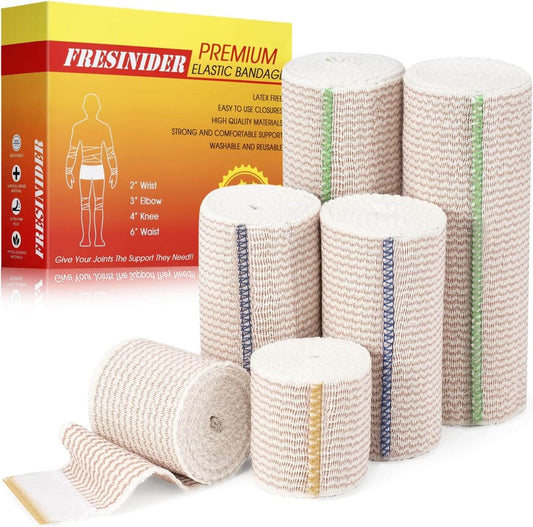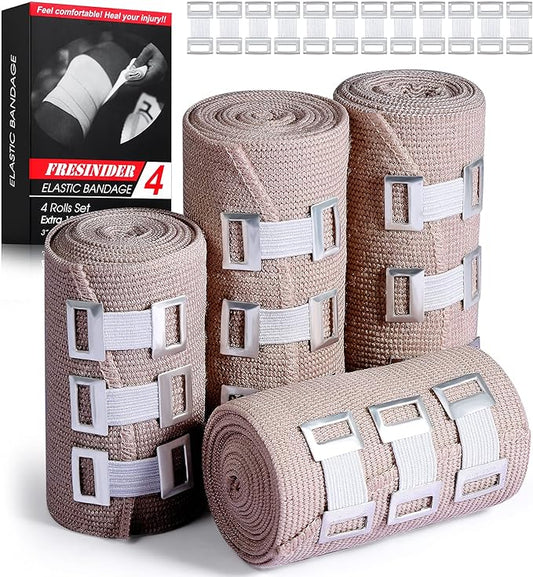Not all bandages are created equal. Many athletes, tattoo artists, and pet owners ask: “What’s the difference between cohesive tape and athletic tape?” Although they look similar, these two tapes perform very differently. Choosing the right one can mean the difference between stable support and unnecessary discomfort. This guide explains how each works, their pros and cons, and which one fits your needs.
1) What Is Athletic Tape?
Athletic tape is a traditional rigid or semi-rigid adhesive tape made from strong cotton or rayon fabric coated with a sticky glue. It is designed to support, restrict, and stabilize joints and muscles during sport or recovery.
- High tensile strength; minimal elasticity (firm restriction)
- Sticks directly to the skin or underwrap
- Commonly used on ankles, wrists, fingers, and knees
2) What Is Cohesive Tape (Self-Adhesive Bandage)?
Cohesive tape (also called self-adhesive bandage wrap) is a soft, stretchable, non-woven fabric that sticks only to itself, not to skin, hair, clothing, or gloves. It’s widely used in healthcare, tattoos, pet care, and outdoor activities.
- No glue — bonds to itself via cohesive surface technology
- Gentle, flexible, breathable; leaves no sticky residue
- Easy to tear by hand; quick to apply and adjust
If you want to learn more how does cohesive tape work, click here.
3) Key Differences: Cohesive vs Athletic
| Feature | Cohesive Tape | Athletic Tape |
|---|---|---|
| Adhesive Type | Self-bonding (sticks only to itself) | Sticky adhesive (to skin or underwrap) |
| Elasticity | Stretchable, flexible | Rigid or low-stretch |
| Skin Friendliness | No residue, kinder to skin/hair | May irritate; can pull hair/residue |
| Support Level | Light–moderate compression | Strong, restrictive support |
| Typical Uses | Compression, dressings, tattoo grip, pets, DIY | Joint stabilization, injury prevention |
| Removal | Painless, clean removal | May be uncomfortable to remove |
4) When to Use Athletic Tape
Choose athletic tape when stability and restriction are the priorities:
- Preventing ankle sprains in basketball, soccer, football
- Supporting weak or recovering joints during training
- Post-injury protection in high-impact or contact sports
Pro tip: If you have sensitive skin, apply a thin underwrap before taping to reduce irritation and ease removal.
5) When to Use Cohesive Tape
Choose cohesive tape for light support, compression, and flexibility—with a gentler feel on skin:
- Wrapping joints/muscles for mild sprains or swelling
- Securing wound dressings or IV lines
- Tattoo machine grip wrap for control and comfort
- Pet paw/leg bandages
- Outdoor & DIY grip (cameras, bats, tools, camo wraps)

6) Pros & Cons Overview
| Cohesive Tape | Athletic Tape | |
|---|---|---|
| Pros | Gentle on skin, easy removal, multipurpose, breathable | Strong stability and restriction; sports-pro proven |
| Cons | Not rigid enough for intense immobilization | Can irritate skin; sticky residue; harder to remove |
7) Common Misconceptions
Myth 1: Cohesive tape can replace athletic tape in every sport.
Not true — cohesive offers flexibility but lacks the rigidity required for immobilization.
Myth 2: The stickier the tape, the better the support.
Over-adhesive tapes can damage skin. Cohesive provides reliable compression without glue.
Myth 3: Cohesive tape is only for medical use.
It’s also popular for tattoos, pets, and outdoor/DIY grip solutions.
8) How to Choose the Right Tape
- Purpose: Need rigid support (athletic) or flexible compression (cohesive)?
- Skin Sensitivity: Consider latex-free cohesive if allergic or sensitive.
- Frequency of Use: Daily/versatile use often favors cohesive wraps.
- Application Skill: Athletic tape requires more taping technique.
- Value: Multipacks of cohesive wrap are highly economical.
9) Quick Guide: Which One Should You Use?
| Need | Best Choice |
|---|---|
| Firm joint support during sports | Athletic Tape |
| Compression and flexibility | Cohesive Tape |
| Sensitive or hairy skin | Cohesive Tape |
| Tattoo, pet care, DIY grip | Cohesive Tape |
| Competitive sports rehab | Athletic Tape |
10) Final Thoughts
Both tapes are essential in first aid, sports, and daily life — but they serve different purposes. Athletic tape gives strong stability when you need to restrict movement, while cohesive tape offers flexible comfort, breathability, and multipurpose use. For everyday wrapping with clean, painless removal, cohesive bandage wrap is the smarter choice.
Try FRESINIDER Cohesive Bandage
11) FAQs
Can I use cohesive tape for sports injuries?
Yes, for light support or mild sprains. For serious injuries or high-impact activity, athletic tape provides stronger stability.
Does cohesive tape stick to skin or hair?
No. It sticks only to itself, so removal is painless and leaves no sticky residue.
Is cohesive tape waterproof?
It’s water-resistant (handles sweat and light moisture), but not fully waterproof. Replace if soaked.
Can I reuse cohesive tape?
It can be adjusted or briefly re-wrapped, but for hygiene, use a fresh piece after each use.
Which tape is better for tattoos or pets?
Cohesive bandage is ideal: gentle, breathable, and leaves no residue on skin or fur.





